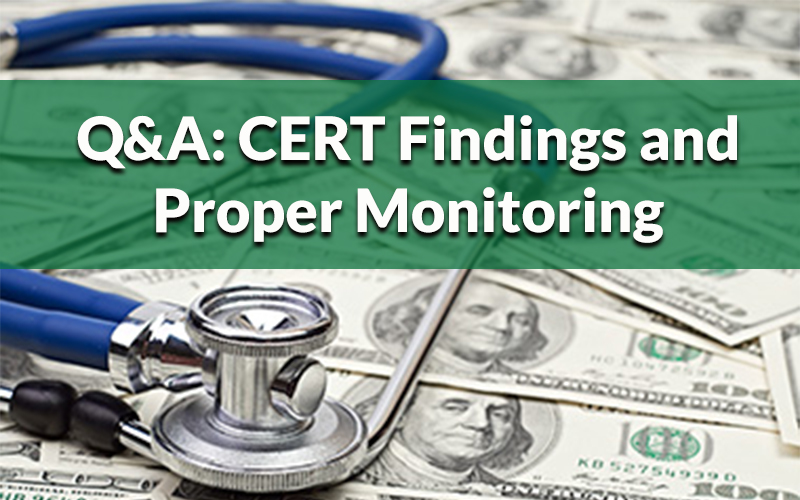Q&A: CERT Findings and Proper Monitoring

Pam Joslin, MM, CMC, CMIS, CMOM, CMCO, CEMA, CMCA-E/M, CEO, with Innovative Healthcare Consulting, presented the webinar ‘Understand CERT (Comprehensive Error Rate Testing) Findings and What Your Organization Should Be Monitoring.’ Ms. Joslin addressed many common questions and we’ve highlighted the top Q&A below.
For those who work in small to mid-size practices, what do you recommend on how to start with monitoring CERT findings?
Small to medium size practices often struggle to maintain their compliance programs due to lack of staff and time to implement and monitor, but when you look at the risk of not doing the monitoring, it is great. You can see the figures in the CERT report and this is from 50,000, in the sampling. You know each of the entities are going to have their own error rates and their own underpayments or overpayments that’s unique to them. Generally, a practice manager in a small practice wears a lot of hats and it is not feasible for that person to initiate and monitor this process. So there are different ways to do that. At a minimum, the goal is to have something in place that is a working document, provided by a consultant or compliance specialist to assist in creating the compliance program and that you are actually adhering to the policies. If you don’t have an auditing process in place, that is a risk management concern. What’s worse than that is actually having a bunch of policies and procedures that your organization is not following.
How can I get my providers engaged in caring about CERT findings?
We call this, “the written word,” because it is a government document produced by credible entities that provide guidance for providers and their organizations. When you are dealing with a document that comes out on an annual basis from these credible governmental entities, it is valuable information that you can share with them to engage them because this is everyone— all the specialties, all the service types, can be part of the 50,000 that they choose randomly on an annual basis.
In being proactive, you have all the information within the CERT report. No matter what provider you work for, what industry, there’s some valuable information there. So, share it. They can acclimate to their own specialty. The report has the specialty and error categories geographically indicated. Engaging providers in identifying their own areas of risk is key to any organizational compliance plan and “protecting their enterprise.”
Are there outside resources available to help get this going in my practice?
Yes, there are links available for compliance and auditing organizations, that you can find through specialty. There are organizations all over, maybe even in your area that may be able to assist with setting up your auditing program. See the following resources:
Comprehensive Error Rate Testing (CERT)
Who would be responsible for this process in a medical practice?
Generally, this falls under the compliance officer, but smaller to medium size practices struggle with the proper structure. Best practices would be to have a compliance person (internally or externally) officiating in this role, who reports to the CEO, and bypasses the other structure to avoid a conflict-of-interest.
If you do not have a compliance officer, share the information, get in contact with an organization that maybe you or your provider is part of and start with them and see what they recommend. If you get someone who is used to your specialty, then that will be a lot easier, for everybody to get up and running with them.
Be sure to check out Pam Joslin’s webinar and explore our other online resources, such as our online compliance training courses, compliance posters, and our complimentary webinars and podcasts.

